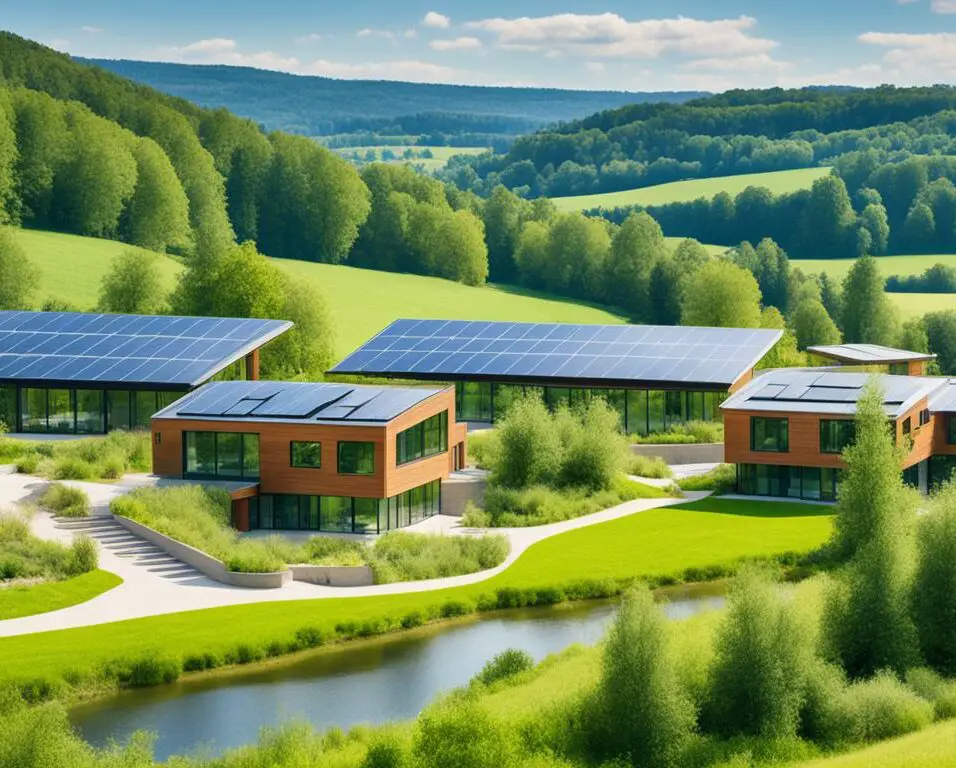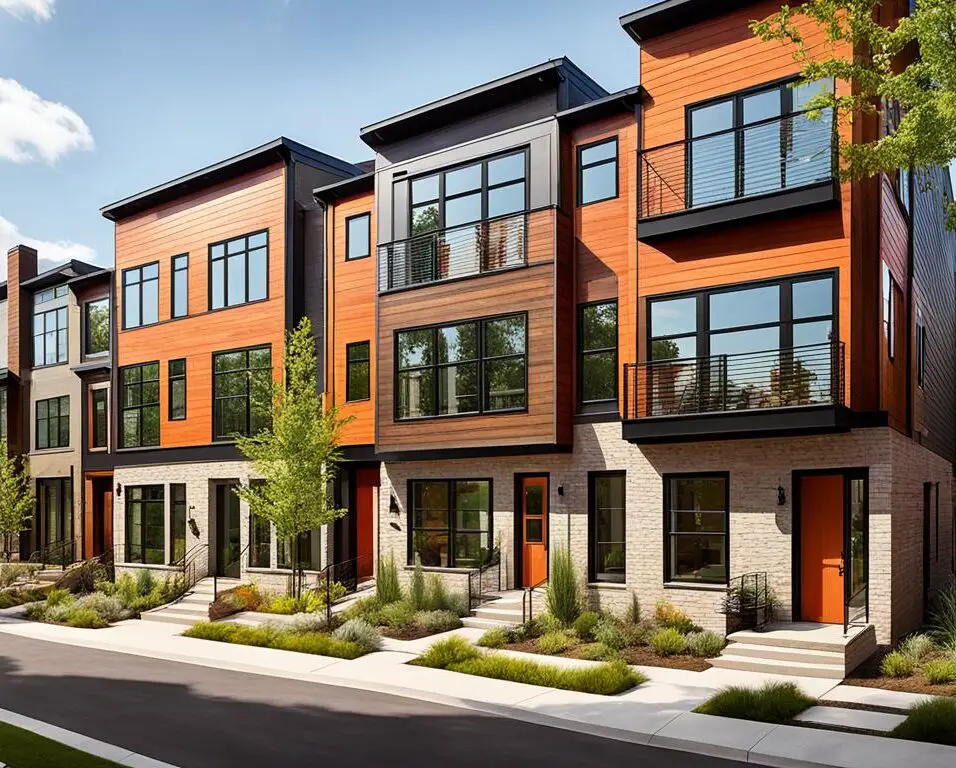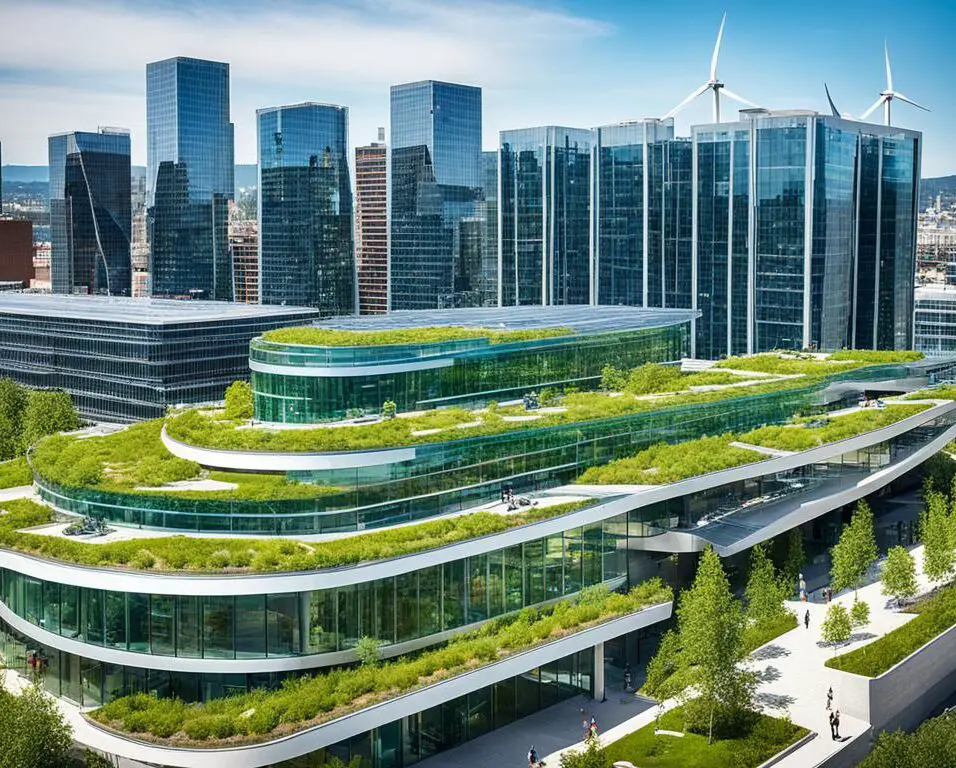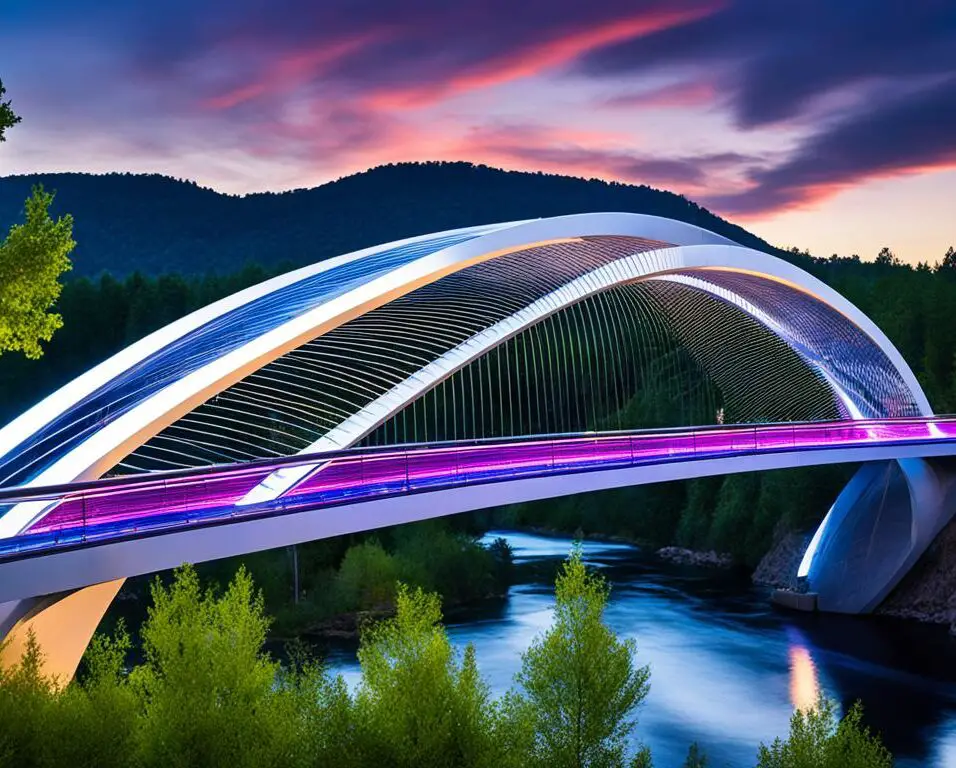Sustainable and Stylish: Bamboo Construction Methods
Greetings! Today, I’ll be delving into the fascinating world of bamboo construction methods. With a growing emphasis on sustainable building practices and the use of eco-friendly materials, bamboo has emerged as an excellent choice in the realm of architecture and design.
What makes bamboo such a remarkable building material? For starters, bamboo is a highly sustainable resource. It grows rapidly, often reaching maturity in just a few years, making it an ideal alternative to traditional construction materials that require decades to replenish. Additionally, bamboo is incredibly strong and versatile, boasting a higher strength-to-weight ratio than many other materials like wood or steel.
Architects and builders have embraced bamboo construction techniques due to their eco-friendly nature and aesthetic appeal. From bamboo scaffolding, which has been used in East Asia for centuries, to bamboo flooring and paneling, this versatile material offers a range of innovative applications. Bamboo construction methods not only contribute to sustainable building practices but also add an element of natural elegance to any project.
I invite you to join me as we explore the benefits and applications of bamboo construction. Let’s dive into the world of sustainable and stylish architecture created through the use of bamboo!
Key Takeaways:
- Bamboo is a sustainable and eco-friendly building material due to its rapid growth and renewability.
- Bamboo has a high strength-to-weight ratio, making it suitable for structural elements like beams and columns.
- Bamboo can be shaped and bent to fit various design needs, offering flexibility in construction.
- Popular applications of bamboo in construction include scaffolding, flooring, and paneling.
- The use of bamboo in construction contributes to sustainable building practices and adds natural aesthetics to projects.
The Benefits of Bamboo Construction
Bamboo is a highly renewable resource that grows quickly and abundantly, making it an excellent choice for eco-friendly building materials. Its sustainable nature aligns with the growing demand for environmentally conscious construction practices. In addition to its eco-friendliness, bamboo offers several benefits that make it an attractive option for architects and builders alike.
Rapid Growth and Renewability
Bamboo is known for its remarkable growth rate, which far surpasses that of traditional building materials like wood or steel. It can reach maturity in just a few years, making it an incredibly renewable resource. This rapid growth ensures a sustainable supply of bamboo for construction purposes, maintaining ecological balance while reducing reliance on finite resources.
Strength and Versatility
Bamboo possesses a remarkable strength-to-weight ratio, surpassing that of many conventional building materials. Its strength makes it an ideal choice for structural elements such as beams and columns. Despite its lightweight nature, bamboo can withstand significant loads and provide durability in various construction applications.
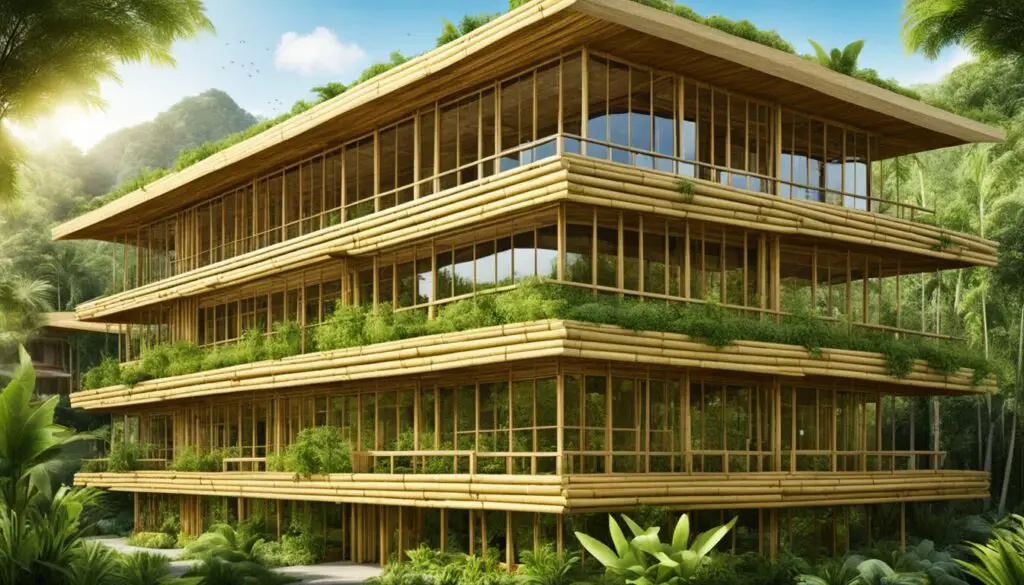
Flexibility and Adaptability
In addition to its strength, bamboo is flexible and can be bent or shaped to fit various design needs. This adaptability makes it a versatile material, allowing architects to explore innovative construction techniques. Whether used for curved elements, intricate details, or unconventional structures, bamboo offers endless possibilities for creative design while maintaining its integrity as a sustainable building material.
Natural Aesthetics
Bamboo’s natural aesthetics greatly contribute to its appeal in architectural projects. Its unique grain patterns and warm color tones add a touch of elegance and organic beauty to any building design. The visual appeal of bamboo can enhance the ambiance of both interior and exterior spaces, creating a harmonious connection between the built environment and nature.
By harnessing the eco-friendly properties and inherent strengths of bamboo, architects and builders can create sustainable structures that prioritize environmental responsibility without compromising on style and functionality.
Innovative Bamboo Construction Techniques
Bamboo construction techniques continue to evolve as architects and builders discover new and innovative ways to utilize this versatile material. One popular technique that has been used for centuries in East Asia is bamboo scaffolding.
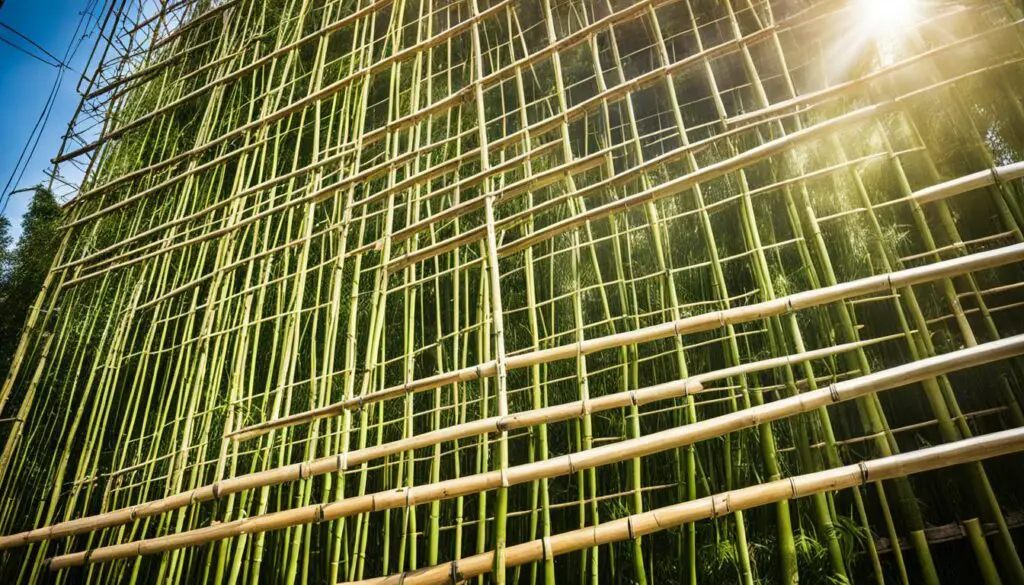
Bamboo’s strength and flexibility make it an ideal material for temporary structures, such as scaffolding, as it can support the weight of workers and construction materials. This sustainable alternative to traditional scaffolding materials offers numerous benefits, including its eco-friendly nature, rapid growth, and durability.
Another application of bamboo in construction is flooring. Bamboo flooring is becoming increasingly popular for its durability and sustainability. It offers a natural and environmentally friendly option for homeowners and architects who are looking for a long-lasting and aesthetically pleasing flooring solution.
Bamboo can also be used for paneling and cladding, providing a unique and textured finish to walls and facades. The natural beauty of bamboo adds warmth and character to any space, making it a popular choice among designers and homeowners alike.
From scaffolding to flooring and paneling, bamboo construction techniques offer a wide range of innovative possibilities. Whether it’s for its strength, sustainability, or aesthetic appeal, bamboo continues to prove itself as a versatile and eco-friendly building material.
Conclusion
Bamboo construction methods are revolutionizing the world of architecture and design, offering a sustainable and stylish alternative to traditional building materials. The rapid growth, strength, and versatility of bamboo make it an attractive choice for architects and builders looking to create eco-friendly and aesthetically pleasing designs.
From bamboo scaffolding to flooring and paneling, this versatile material can be incorporated into various aspects of a building’s construction. Bamboo scaffolding, with its strength and flexibility, has been used for centuries in East Asia, showcasing its reliability for temporary structures. Bamboo flooring, on the other hand, is gaining popularity for its durability and sustainable qualities.
As the demand for sustainable building practices continues to grow, bamboo construction methods are likely to play a significant role in the future of architecture and design. By harnessing the benefits of bamboo, including its renewability and natural aesthetics, architects can create buildings that are not only environmentally responsible but also visually captivating.





